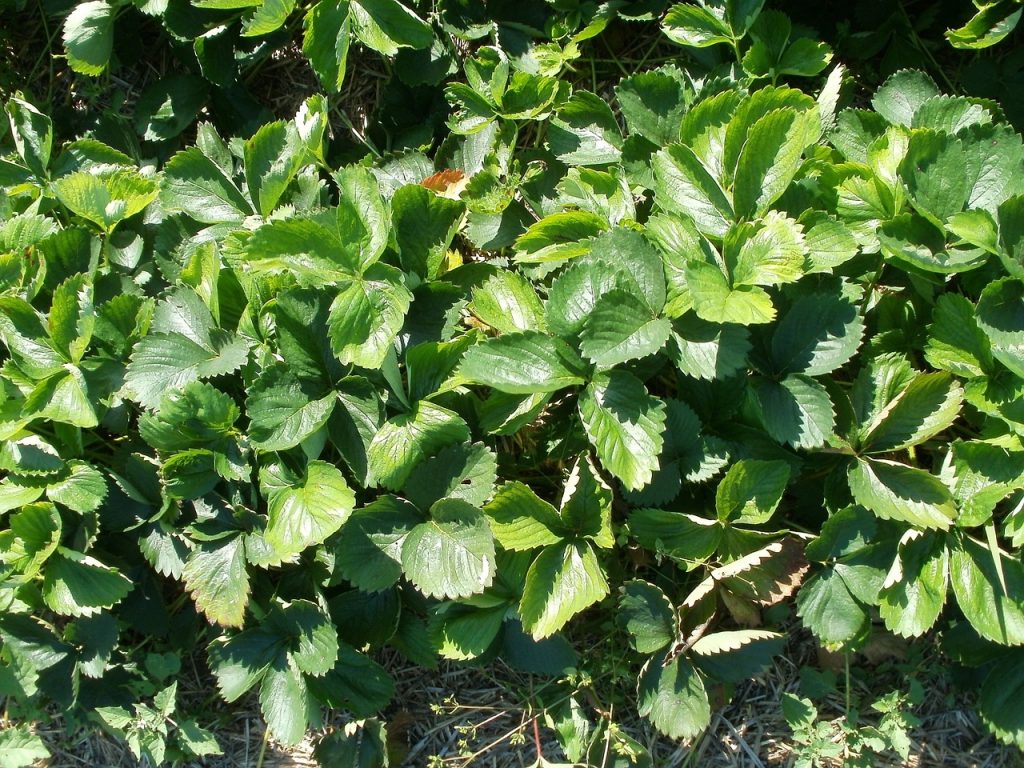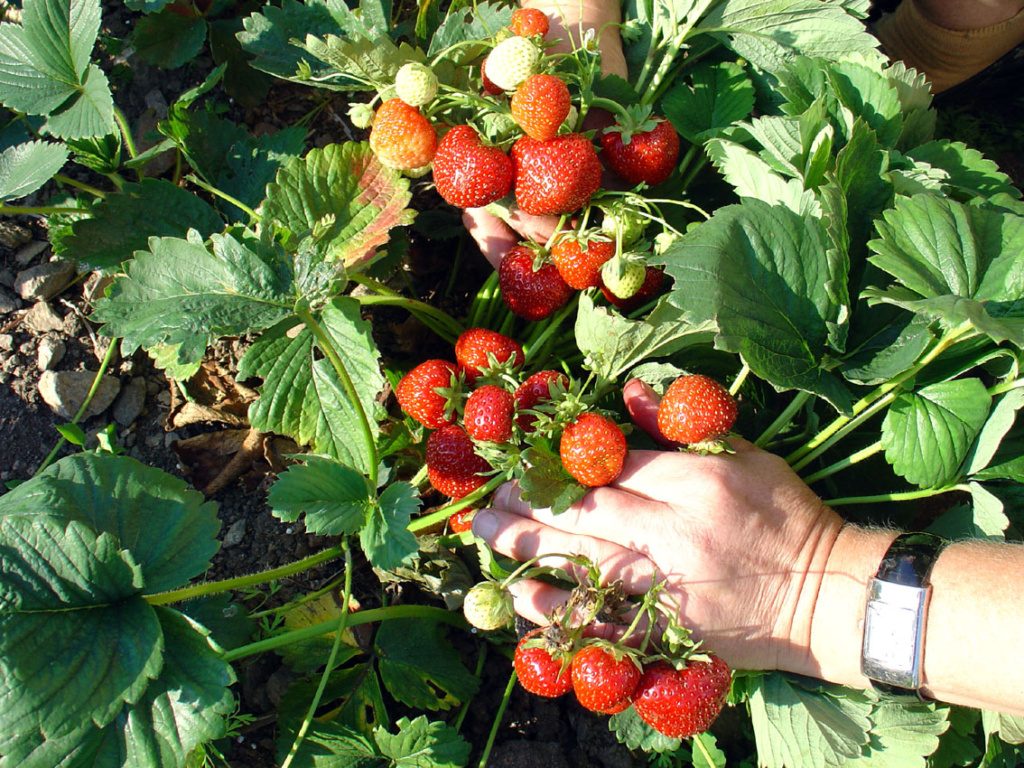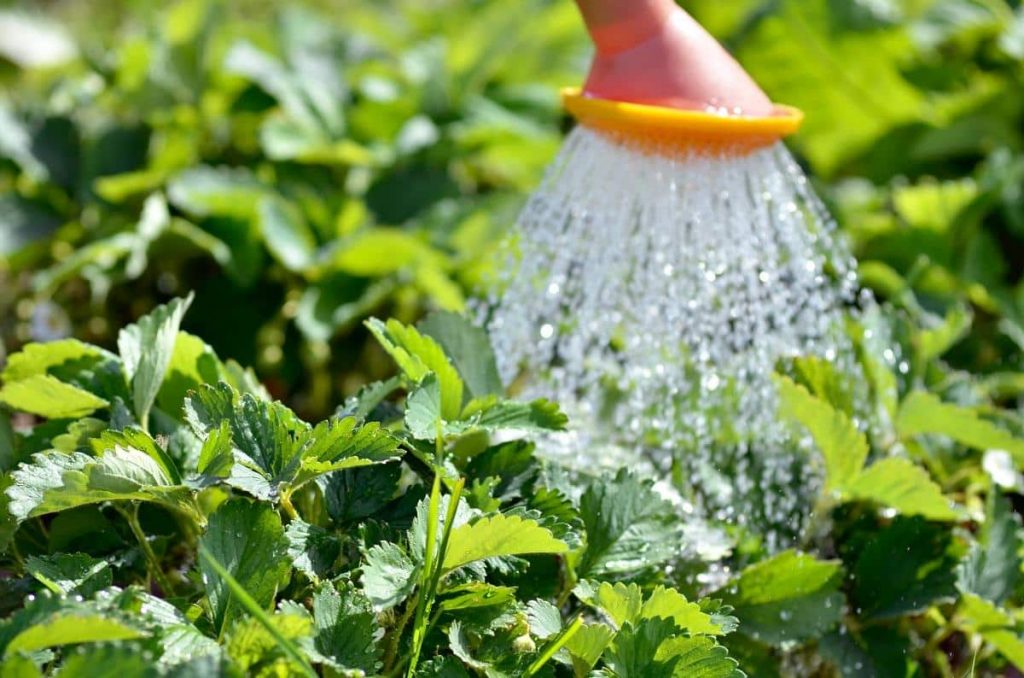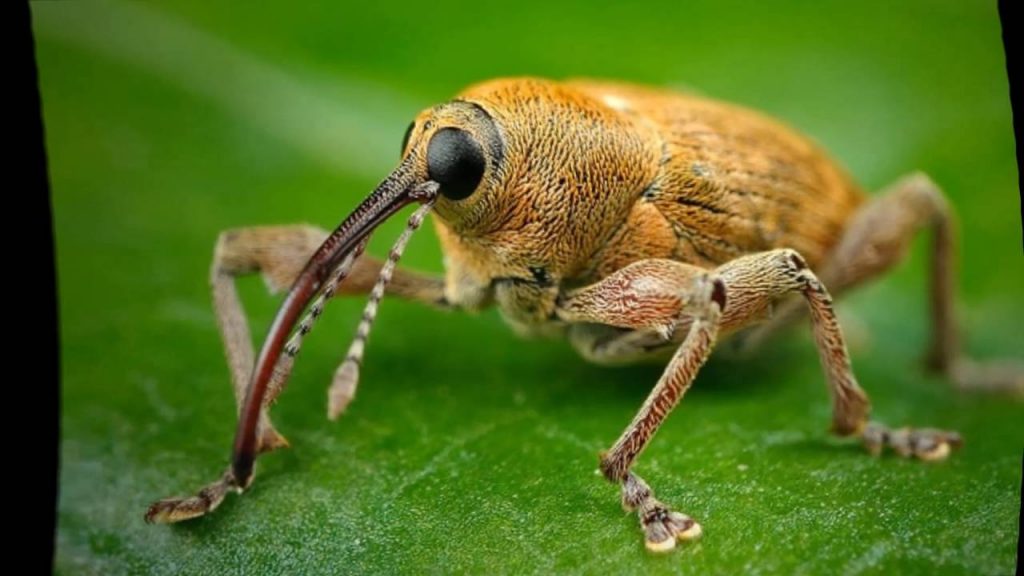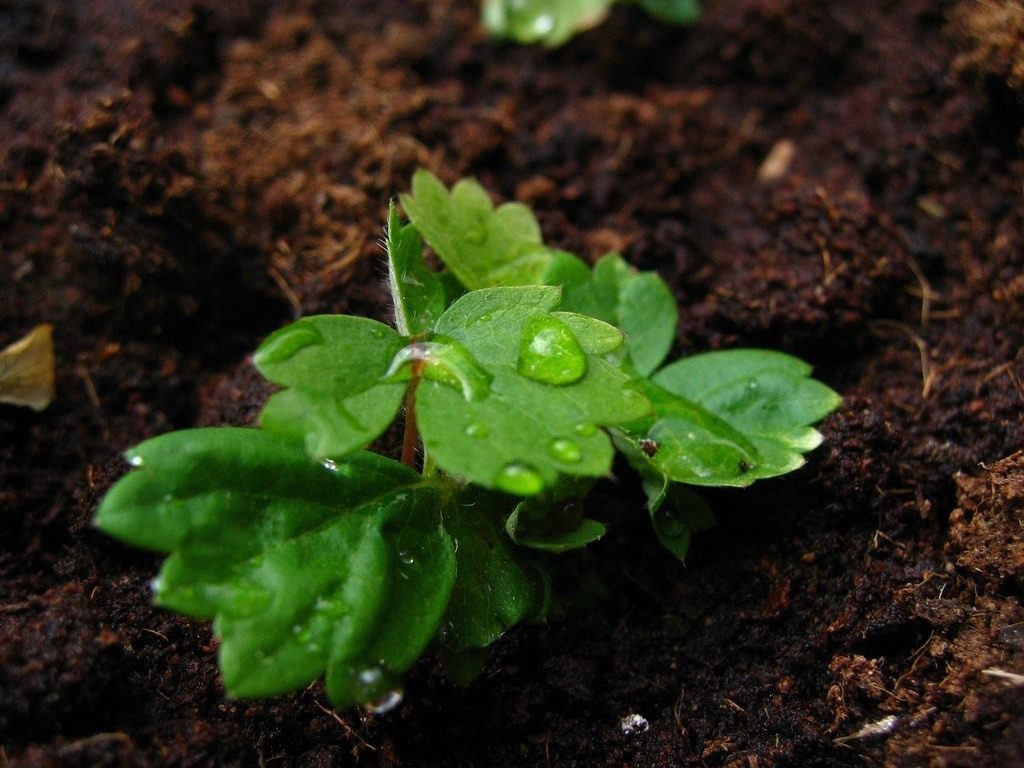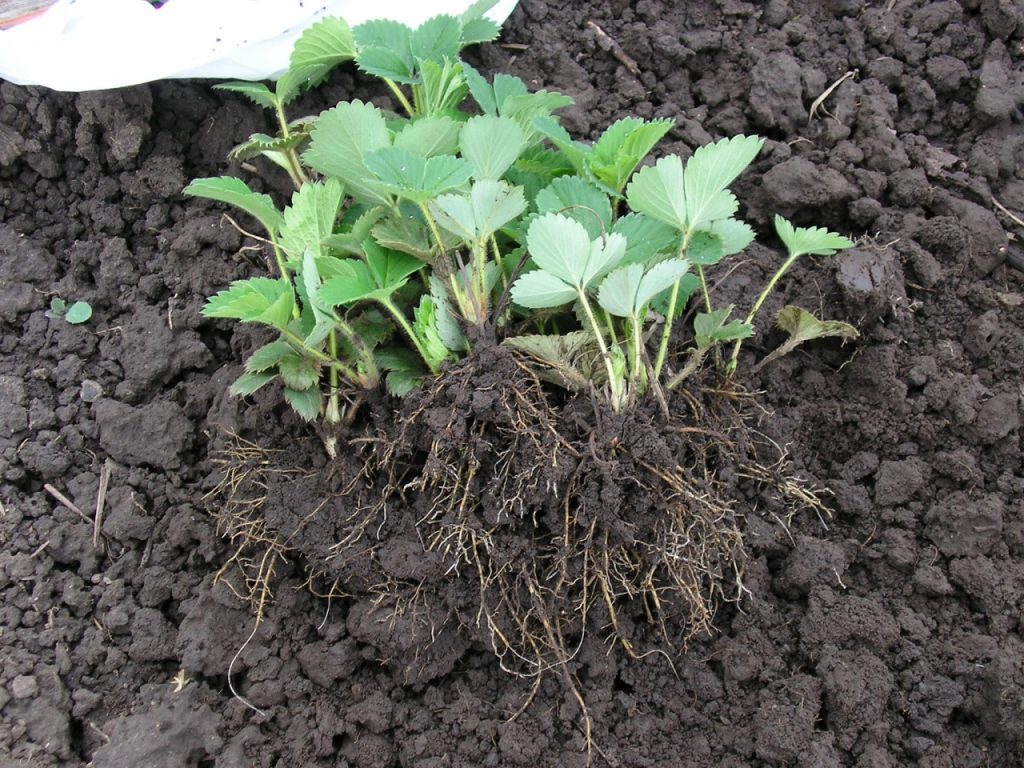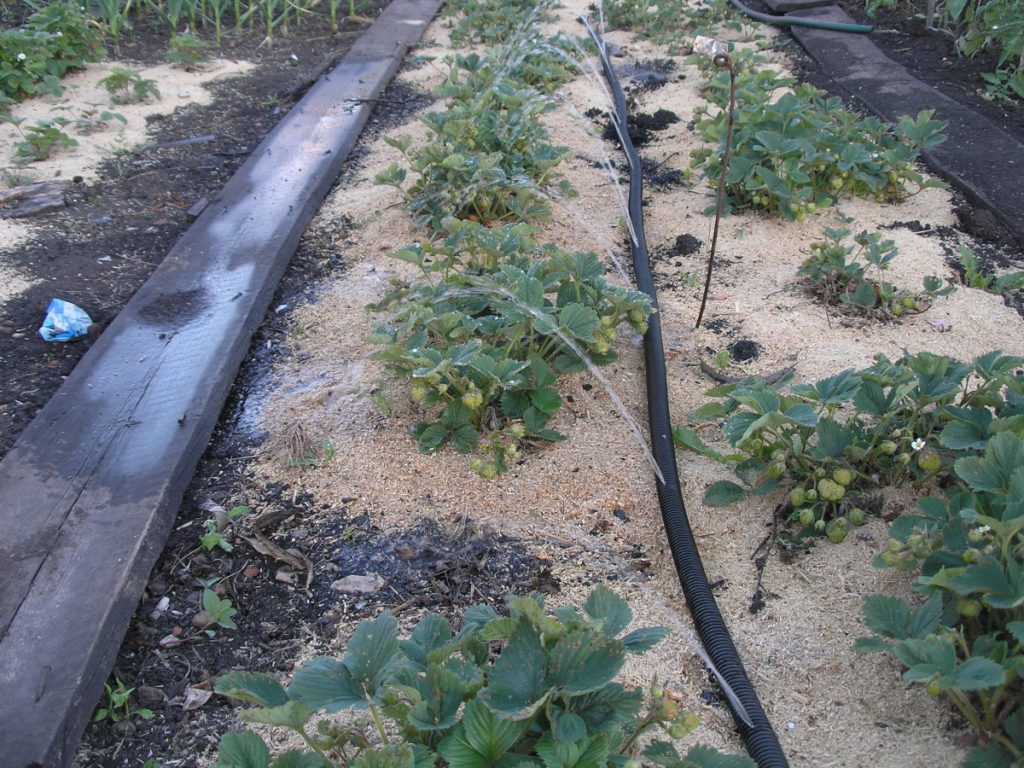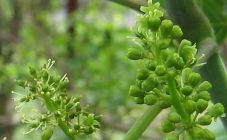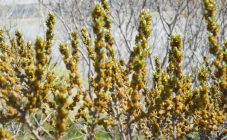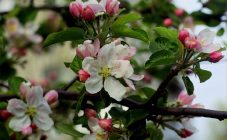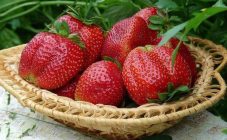Content:
Strawberries are found in almost every garden plot. The unpretentious and healthy berry thrives in temperate climates and is cultivated in many countries. But its cultivation requires some experience, only if all the rules are followed can you get a good harvest.
Strawberry characteristic
Plants and berries of green and nutmeg strawberries are called strawberries. The word “strawberry” itself means “club”, “spherical”. It is a perennial herb that belongs to the Pink family. It has large, trifoliate oval or ovoid leaves, green in color. Petioles reach 40 cm in height. The roots are fibrous, germinate to a depth of 20-25 cm.
Inflorescence in the form of a small, - or multi-flowered shield. Strawberry flowers come in white, yellow or pink. They are unisexual, five-petaled, pollinated by insects, located on long peduncles.
Fruits are complex, conical in shape, are false berries (many-nuts). Seeds are brown on the outside. The color of the berries is usually bright red. The pulp is juicy, aromatic.
Varieties
There are hundreds of varieties of strawberries. Only 73 varieties are registered in Russia.
In order for the yield to be high and the berries to be tasty, you need to choose elite varieties:
- Temptation. Hybrid. Early maturing, large-fruited variety. High yield - about 3 kg of berries are harvested from one bush. Lightly musky pulp.
- Queen Elizabeth 2. The pride of Russian breeders. Two crops are obtained in one season. The taste of the pulp is sweet, honey. This remontant variety has excellent transportability and frost resistance.
- Mara de bois. Hybrid. The berries are round, very sweet. The variety has high frost resistance.
- Honey. A very popular early ripening American variety. Resistant to bad weather, gray mold, tick attack. Used in industrial blanks.
- Masha. An early ripe variety with very large berries. One berry reaches a mass of 100 g. It has good survival rate and resistance to diseases.
- Kimberly. Dutch hybrid variety. The fruit is in the shape of a heart, caramel taste with a slight sourness. One berry can weigh from 15 to 20 g. One of the advantages of the variety is a low degree of poultice.
- Gigantella. Very large fruits, the weight of one berry can rise up to 125 g. The pulp is characterized by juiciness and sweet, slightly pineapple taste. Withstands transportation well.
Regardless of the variety chosen, high yields of strawberries can only be achieved with proper care.
Strawberries do not bloom: reasons
Every gardener can face the vagaries of strawberries due to agricultural errors. The strawberry fades, but gives only a meager and small harvest. It so happens that there are no fruits at all, since there was not even flowering. Strawberry does not bloom, what should I do?
Late boarding
If the strawberry does not bloom, the reasons lie in the late planting. The correct planting date is in the second half of summer - late July or early August. For central Russia, the planting deadline is shifted to early September.Until the first cold days, strawberries take root reliably, lay berry buds for the future harvest.
If the planting is done at a later date, then the flowers in the spring can not wait. All her energy is spent on the development of the root system and leaves, and there is no time left for the formation of buds. Therefore, the harvest is postponed to the next year.
The gardener can only strengthen the care of such seedlings in anticipation of the next year. If the care is correct, the strawberries will bloom and give a harvest. If the strawberry was never able to bloom, then you need to look for other reasons.
Age
If strawberries bear fruit poorly, then the reason may be at its age. Bushes growing in the same place for over 5 years are considered old. They bloom worse, give too small berries. Landing will have to be updated. For this, old bushes are removed and burned, and young ones are planted in their place.
No pollination
Why don't strawberries get tied after long rainy weather? This is due to the absence of pollinating insects. Sometimes bees and bumblebees disappear due to the destruction of their nests during agricultural work. To attract insects again, you need to stop treating strawberries with insecticides. Flowering bushes are sprayed with a warm water solution with a small amount of aniseed or coriander oil.
Water and nutritional deficiencies
Strawberries do not bloom well with insufficient watering, lack of dressing. It is necessary to feed and regularly water the plants until September, especially in August, when flower buds are formed for the next year.
Excessive feeding
A large amount of nitrogen-containing fertilizers will also prevent strawberries from blooming. Excessive feeding leads only to the growth of foliage, strawberries "fatten". The number of whiskers may increase. You should stop using nitrogen-containing fertilizers, and cut the foliage. You need abundant watering to flush out excess nitrogen from the soil. You can add phosphorus-potassium fertilizers. A year later, the crop can rise again.
Weevil
Often the gardener notices that the strawberries do not have time to bloom, as the buds dry up and fall off. It is worth examining the plants for a weevil attack. The reason is that the pest lays eggs in the buds, so strawberries do not develop berries. Insect control consists in the autumn collection and burning of plant residues, loosening the soil.
After the buds appear next year, you need to use the insecticidal preparation Fitoverm, Admiral, Iskra-Bio. Spraying is carried out in the early morning so that the poison has time to cease its effect before nightfall. Processing is carried out one week before flowering.
Diseases
The lack of berries can be attributed to powdery mildew disease and leaf spot. Therefore, in the spring it is necessary to carry out prevention.
In order for the flower stalks to set berries, the following preventive measures must be provided:
- removal of dried foliage after snow thaw;
- loosening the earth;
- the first spraying with a 3% solution of Bordeaux mixture in spring and the second - with a 1% solution of Bordeaux mixture on the eve of flowering;
- spraying with insecticides from weevils after the appearance of peduncles;
- collection and destruction of damaged buds with weevil larvae;
- processing of strawberries with Bordeaux mixture after harvesting.
Little light
Strawberries grow poorly, what should I do? This berry loves the sun. Strawberries planted in the shade slows down their development, cannot grow, does not bloom. The leaves become pale, and the petioles become long. We'll have to transplant it along with a clod of earth to a more lighted place.
Hypothermia
In a frosty winter with little snow, strawberries may turn out to be without snow cover. Freezing of the heart becomes the reason for the lack of flowering. It is not worth removing frozen strawberries, since over the summer they can recover and bloom next year.To avoid hypothermia, the plants are covered with agrofibre, leaf litter, spruce branches, and snow retention is performed. It is also necessary to cover the strawberries with returnable spring frosts.
Darkening of the middle of the flower is a sure sign of frostbite in the strawberry. The risk of hypothermia arises from the wrong location. Avoid planting strawberries in lowlands that accumulate cold, stagnant air.
Unsuitable soil
Strawberries do not bear fruit, what should I do? Perhaps the problem lies in heavy clay soils. All the power of the plant goes only to the formation of the whiskers. Such soil needs the introduction of humus, coarse sand. It is good to place the beds on a small elevation; it is recommended to prudently make drainage.
Landing errors
Too deep or high planting of a seedling leads to the fact that the bush never bloomed. The correct position of the strawberry heart is flush with the ground. A deep-planted plant needs to be dug out, and a too high planting is corrected by adding earth.
Wrong grade
If strawberries bloomed well, but there are no berries, what is the reason? By mistake or as a result of deception, weedy varieties of strawberries can be purchased. Wildlife does not produce berries, instead it grows rapidly, filling the entire space. Wild varieties may even bloom, but the berries will grow small and in minimal quantities. If the situation repeats itself for 2 years, then the plants will have to be removed. Quality varieties adapted to the climate must be purchased from specialized stores.
Incorrect decimation
Gardeners are faced with the fact that from year to year there are many flowers on strawberries, but no berries. Strawberries can bloom, but not yield. An inexperienced gardener concludes that the strawberry has degenerated. The fact is that strawberries have one peculiarity. The bush with male flowers is more developed and massive. Whiskers and rosettes are stronger and stand out noticeably against the background of frail and small female bushes.
During the thinning of rows, the gardener seeks to get rid of weaker specimens by mistakenly removing bushes with female flowers. Time after time, their numbers decrease in favor of male plants. But for normal pollination and fruiting, only 15-20% of plants with male flowers are needed.
Tips for proper care
For strawberries to bloom, you need to follow the rules for planting and caring for the plant. The choice of a place for a strawberry garden greatly influences the harvest. The most favorable location of the beds is southwest. Strawberries cannot be placed in the shade of trees.
It is recommended to take seedlings in cups so that the root system is closed. The length of the root should be about 5 cm, and 2-3 leaves should be present on the bush itself. To increase the survival rate of seedlings, experienced gardeners pinch the longest root during planting. You need to leave only 3 leaves, remove the rest. These actions will allow the seedlings to take root better.
It is recommended to plant after rain or watering to keep the soil moist enough. Before planting, the box with seedlings is kept in a cool place for 5 days. When planting, you need to place the neck of the bush at ground level, the roots should take a vertical position.
Proper watering is important, 2-3 times a week. In dry weather, watering is carried out as the soil dries up. Moisture must penetrate into the soil to a depth of at least 5 cm. Throughout the growing season, strawberries require abundant watering.
Top dressing is done three times per season:
- After planting in the ground, strawberries need phosphorus.
- Potassium must be added before flowering.
- After harvesting, it is worth feeding with phosphorus and nitrogen.
To make strawberries bloom and form a good harvest, it is necessary to trim the antennae and young shoots, as well as diseased leaves creeping along the ground, dry twigs. Weed management should not be neglected. All these procedures help to increase the yield of the berry.
In order for the strawberries to maintain abundant flowering and fruiting from year to year, the method of transplanting them to a new place is used. At the end of the third season, the bushes are dug up together with the rhizome and burned, since old plants give a poor quality crop. Only healthy and strong specimens no more than 2 years old are suitable for transplantation.
Transplant timing:
- in the fall, it is good to transplant young bushes from the mustache of an old plant;
- in spring, bushes obtained from seeds are transplanted at home.
Strawberry breeding methods
Strawberry propagation is carried out in 3 ways: with the help of seeds, mustache, division.
Seed propagation is usually used to develop a new variety. With this method, there is a high probability of obtaining a plant that differs in properties from the mother. The seeds are taken from the dried outer layer of a ripe berry. In March, the seeds are placed in a container, sprinkled with soil, put in a warm and bright place, sprayed with water. A month later, shoots can be seen. After the formation of 2-3 leaves, the seedlings are dived, seated in separate containers. In May, it is planted in the ground.
A convenient way to propagate strawberries is with a mustache from vegetative buds. Take no more than a couple of the first whiskers from the strongest 1-2 year old plants, the rest are removed. On each of them, only the first rosette is left, cutting off the ends of the mustache. The rooted mustache is separated from the mother bush only in August, 7 days before transplanting to a new place.
By dividing, you can propagate remontant strawberries that do not give a mustache. A productive, well-developed 3-4 year old bush is dug up and divided with a knife. Each of the seedlings must have an intact horn and at least 3 leaves. The division is carried out in spring or autumn, after the completion of fruiting.
The problem of the lack of flowering strawberries and a low yield will not arise if you follow the rules of agricultural care.
